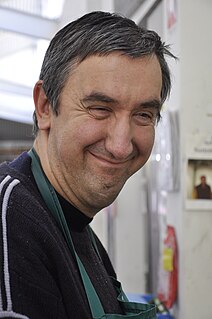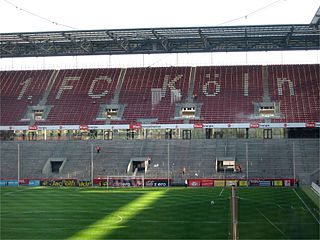 W
WAustralian rules football culture is the cultural aspects surrounding the game of Australian rules football, particular to Australia and the areas where it is most popular. This article explores aspects and issues surrounding the game, as well as the players, and society. Australian Rules is a sport rich in tradition and Australian cultural references, especially surrounding the rituals of gameday for players, officials, and supporters.
 W
WThe AFL Record is the official program available at Australian Football League (AFL) matches. The publication began as the Football Record in Melbourne, Australia in 1912, making it one of the oldest magazines in Australia.
 W
WThe Anti-Football League is an Australian organisation that pokes fun at the obsession with Australian rules football. It was founded by Melbourne journalist Keith Dunstan in 1967.
 W
WAn Australian rules football card is a type of trading card relating to Australian rules football, usually printed on cardboard, silk, or plastic. These cards feature one or more Australian rules football players. Cards are almost exclusively found in Australia as no top-level leagues are present outside the country. Prices for Australian rules football cards can be very high. This is illustrated for both vintage and modern cards such as an 1894 American Tobacco Company card featuring Essendon player Will Crebbin which sold for $10,110 in 2018 and a 2004 Select AFL Conquest Triple Brownlow Medallist signature card featuring Nathan Buckley, Adam Goodes and Mark Ricciuto which was valued at $3,000 in 2018.
 W
WAustralian rules football has had a significant impact on popular culture, especially in its native Australia, capturing the imagination of Australian film, art, music, television and literature.
 W
WIn Australian rules football, a banner is a large crêpe paper and sticky-tape banner constructed by each team's cheer squad. It is hoisted before the start of a match, and typically shows an encouraging or celebratory message to the team; then, as the players take to the field, they run through the banner, breaking it. Traditionally, the captain, or a milestone-achieving player leads the team when breaking the banner.
 W
WThe Chiko Roll is an Australian savoury snack invented by Frank McEncroe, inspired by the Chinese spring roll and first sold in 1951 as the "Chicken Roll" despite not actually containing chicken. The snack was designed to be easily eaten on the move without a plate or cutlery. Since 1995 they have been owned by Simplot Australia.
 W
WValerio Ciccone is an Australian artist who is best known for his drawings of mass-media events and icons taken from popular culture. He has worked from his Northcote-based studio at Arts Project Australia since 1984, where he has also had numerous solo shows. He has exhibited widely, both nationally and internationally [see Exhibitions] and his work is held in the collections of the National Gallery of Australia, MADMusée, Liège, and the National Sports Museum.
 W
W"Colour of Your Jumper" is a song written by Australian singer songwriter Archie Roach in 1993, following an incident where Indigenous Australian Football League player Nicky Winmar was receiving racial abuse from spectators resulting in Winmar lifting up his jumper and, facing to the crowd, pointed to his skin. A demo of this version was later included on the 2013 compilation album Creation.
 W
WDreamtime at the 'G is an annual Australian rules football match between Australian Football League clubs Essendon and Richmond.
 W
W"Every Day My Mother's Voice" is a song by Australian recording artists Paul Kelly and Dan Sultan. The song was released on 3 May 2019, and recorded for The Final Quarter; a 2019 Australian documentary about the final stages of the Australian football career of Adam Goodes, during which he was the target of repeated booing by opposition fans and his relationship with his mother Lisa-May Sansbury.
 W
WA football chant or terrace chant is a song or chant usually sung at association football matches by fans. Football chanting is an expression of collective identity, most often used by fans to express their pride in the team or encourage the home team, and they may be sung to celebrate a particular player or manager. Fans may also use football chants to slight the opposition, and many fans sing songs about their club rivals, even when they are not playing them. Sometimes the chants are spontaneous reactions to events on the pitch.
 W
WFootballer is a 1946 painting by Australian artist Sidney Nolan. It depicts an Australian rules footballer standing before a crowd of spectators at a football match. For many years the painting was thought to be a generic image of a footballer, however Nolan later revealed that the painting is based on Bill Mohr, a star player for the St Kilda Football Club during the 1930s.
 W
WThe Game in Time of War is a collection of essays and newspaper articles written by Australian journalist Martin Flanagan about Australian rules football. The theme of the content is analysis of the relation between Australian football and the participation of Australian people in wars. Ross Fitzgerald wrote that the book's first essay described the impact of 9/11 on Australian football in compelling terms, but that it was a disjointed "Stream of consciousness" in the other essays.
 W
WIn sports, a goal celebration is the practice of celebrating the scoring of a goal. The celebration is normally performed by the goalscorer, and may involve their teammates, the manager or coaching staff or the supporters of the team. Whilst referring to the celebration of a goal in general, the term can also be applied to specific actions, such as a player removing their shirt or performing a somersault. Celebrations are generally more substantial in lower-scoring sports, such as association football and ice hockey, where a score has greater significance.
 W
WAn Australian or New Zealand meat pie is a hand-sized meat pie containing diced or minced meat and gravy, sometimes with onion, mushrooms, or cheese and often consumed as a takeaway food snack.
 W
WA pennant is a commemorative flag typically used to show support for a particular athletic team. Pennants have been historically used in all types of athletic levels: high school, collegiate, professional etc. Traditionally, pennants were made of felt and fashioned in the official colors of a particular team. Often graphics, usually the mascot symbol, as well as the team name were displayed on pennants. The images displayed on pennants were either stitched on with contrasting colored felt or had screen-printing. Today, vintage pennants with rare images or honoring special victories have become prized collectibles for sporting enthusiasts. While pennants are typically associated with athletic teams, pennants have also been made to honor institutions and vacation spots, often acting as souvenirs.
 W
WA pitch invasion occurs when an individual or a crowd of people watching a sporting event run onto the playing area to celebrate or protest an incident. Pitch invasions may involve individual people or capacity crowds. Pitch invasions can result in charges being brought, possibly resulting in fines or jail time, and sanctions against the club(s) involved, especially if the actions cause a disruption in play.
 W
WRetiring the number of an athlete is an honor a team bestows upon a player, usually after the player has left the team, retires from the sport, or dies. Once a number is retired, no future player from the team may wear that number on their uniform, unless the player so-honored permits it; however, in many cases the number cannot be used at all. Such an honor may also be bestowed on players who had highly memorable careers, died prematurely under tragic circumstances, or have had their promising careers ended by serious injury. Some sports that retire team numbers include baseball, cricket, ice hockey, basketball, American football, and association football. Retired jerseys are often referred to as "hanging from the rafters" as they are, literally, put to hang in the team's home arena.
 W
WSupporters' groups or supporters' clubs are independent fan clubs or campaign groups in sport, mostly association football.
 W
WA terrace or terracing in sporting terms refers to the standing area of a sports stadium, particularly in the United Kingdom and Republic of Ireland. It is a series of concrete steps, with intermittent safety barriers installed at specific locations to prevent an excessive movement of people down its slope.
 W
WThree of the Players is a 1953 painting by Australian artist John Brack. The painting depicts three Australian rules footballers from the Collingwood Football Club. The players are thought by some to be Lou Richards, Jack Regan and Phonse Kyne. However, Brack's widow, Helen, was of the opinion that they are not recognisable individuals but "stereotyped characters".